2024 Toyota GR Yaris | PH Review
Finally - a production-spec GR Yaris on road and track. Can it really be £11k better than the last one?

Four years have passed since the Toyota GR Yaris broke the internet (PH forums included) with unprecedented levels of anticipation and hype. All the ingredients of hot hatch greatness were there: an all-wheel-drive chassis homologated for an (unfortunately defunct) ruleset in the World Rally Championship, the most powerful three-cylinder turbo engine to ever appear in a production car and some very tempting finance options had rally fans badgering their local Toyota dealer to get their name on the waiting list. As we all know, the wait was very much worth seeing out.
Step into the present and there’s a new GR Yaris in town. Sure, a facelift is never going to send the intended audience into overdrive quite like the original did, but there’s a comprehensive list of upgrades, tweaks and adjustments that aim to improve many of the bits that did work, and address the handful that didn’t.
For the latter, there’s a refreshed cabin with a dash that sits 50mm lower to rectify the launch car’s letterbox-like view out front and seats that are mounted 25mm closer to the ground to combat the old model’s lofty driving position. Analogue dials make way for a digital dashboard because, says Toyota chairman Akiyo ‘Morizo’ Toyoda, it’s what the WRC cars use, and it’s mounted in a new (and very blocky) housing that’s designed to put all the controls within the driver’s reach.

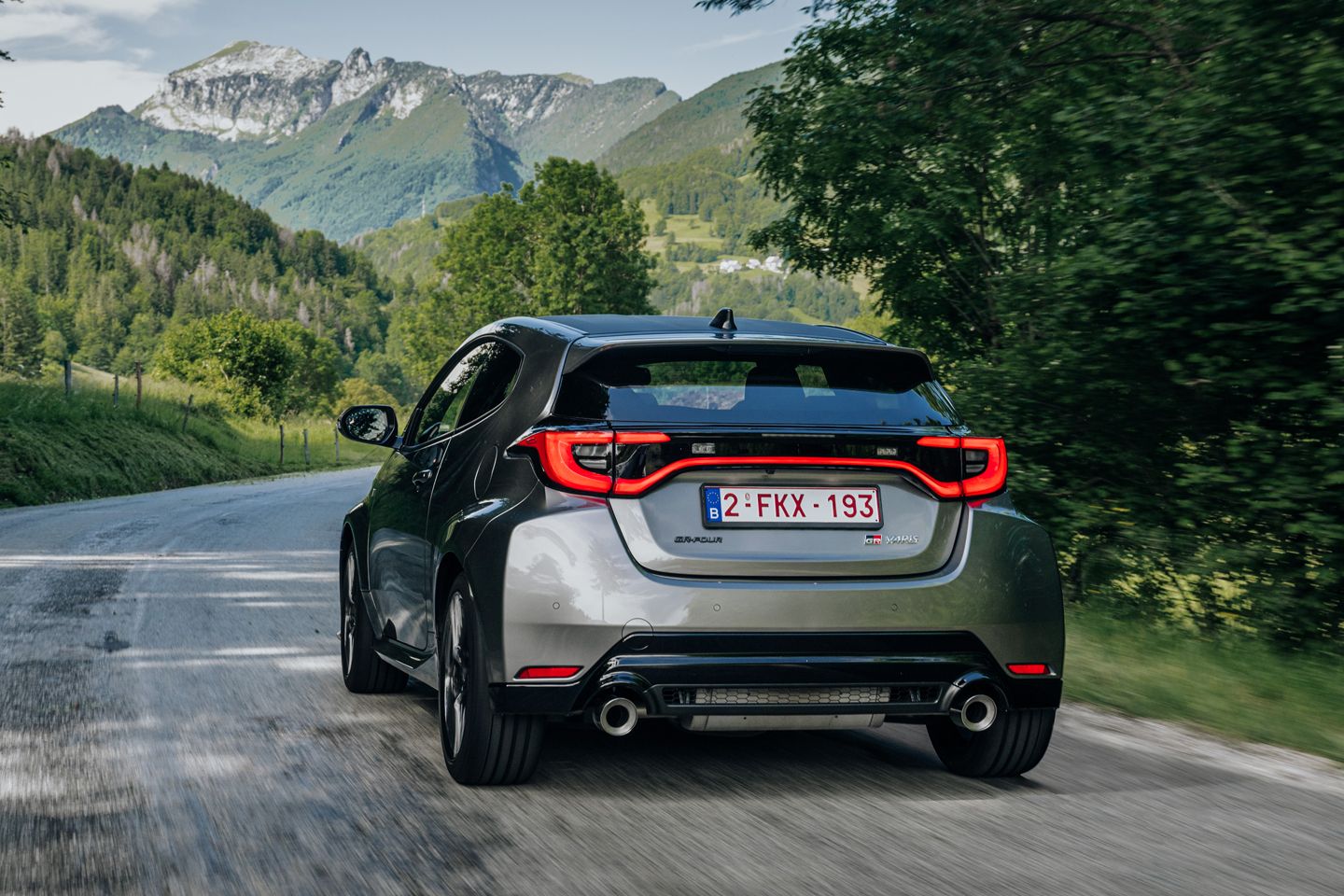
Of course, everything that made the original brilliant remains. ‘If it ain’t broke, don’t fix it’, so it goes, but Toyota encouraged its engineers and test drivers to break the car (not deliberately obviously) so it would know where improvements are required. That includes revisions to the 1.6-litre turbocharged motor (lighter pistons and tougher valvetrain) alongside a cooling package with a new sub-radiator and intercooler spray resulting from lessons learned in rallying. The same goes for the reworked styling, with the front bumper now split into three smaller pieces to make it easier and cheaper to replace after dinging it on a special stage.
It’s tougher, too. The amount of bonding adhesive and spot welds have been upped by 24 per cent and 13 per cent respectively, and the suspension struts are now mounted with three pins instead of one to maintain geometry under load. Crucially, though, the spring rates have increased all round to keep a lid on body control. Oh, and the price has been ramped up significantly too. The original Yaris started at £30k back in 2020, with Circuit Pack cars adding £3k on top of that. Nobody bought the other versions, so in Britain we’re only getting the Circuit Pack - which will now set you back £44,250. Oof.
Everything costs the moon these days, of course, but an £11k premium over the old car is quite the hike. To see if it really is worth the extra cash, Toyota has had us testing it in all conditions. You may recall we’ve already driven the new model on a frozen lake in Finland (and had ridiculous amounts of fun while doing so), which revealed it’s a lot keener going sideways on loose surfaces than its predecessor, surprisingly. However, the conditions couldn’t be more different for our latest test: a fast, technical circuit in Southern France in the middle of a heatwave.


Right off the bat, it’s clear all the work that’s gone into firming up the GR Yaris has paid off. The old car’s tendency to roll has been all but eradicated, as the stiffer suspension setup keeps 1,280kg of hatchback nicely balanced through the circuit’s switchbacks and cone chicanes. With that comes a noticeable improvement in steering feel. The old car was a touch vague off-centre; it’s much faster and weightier this time, communicating the ripples of the rumble strips right to your fingertips.
Grip levels are immense. Just when you think you’re on the limit, the front end somehow manages to summon adhesion from thin air to draw you even closer to the apex. Granted, with track temperatures at boiling point it’s no surprise the Yaris hauls out of corners with unbreakable traction, although we must account for the reworked Track differential mode, too, which varies the torque split between 60:40 and 30:70 for maximum bite. There’s a moment of hesitation on exit as the turbo spools, but that just forces you to get on the power earlier, managing the torque curve to spit you out the other side. With all the revisions and refinements, it hasn’t lost any of its old-school charm.
Conversely, the twitchiness you’d expect from a short-wheelbase, all-wheel-drive hot hatch never seems to materialise. The Circuit du Laquais is full of crests right in the middle of fast sweeping curves and on the entry of blind corners, a recipe for squirrelly braking and lift-off oversteer. Yet at no point does the GR become unstuck, with both axles firmly clinging on when the camber of the circuit tries its best to chuck you off. It’s only under heavy braking that the rear goes light, but not to the point where it feels like it wants to overtake the front. The same goes for mid-corner rotation, with the car pivoting sweetly beneath your backside with that assuring bite as the Michelin Pilot Sport 4Ss bed in under acceleration. It’s not overly playful, but it's beautifully adjustable right on the limit.

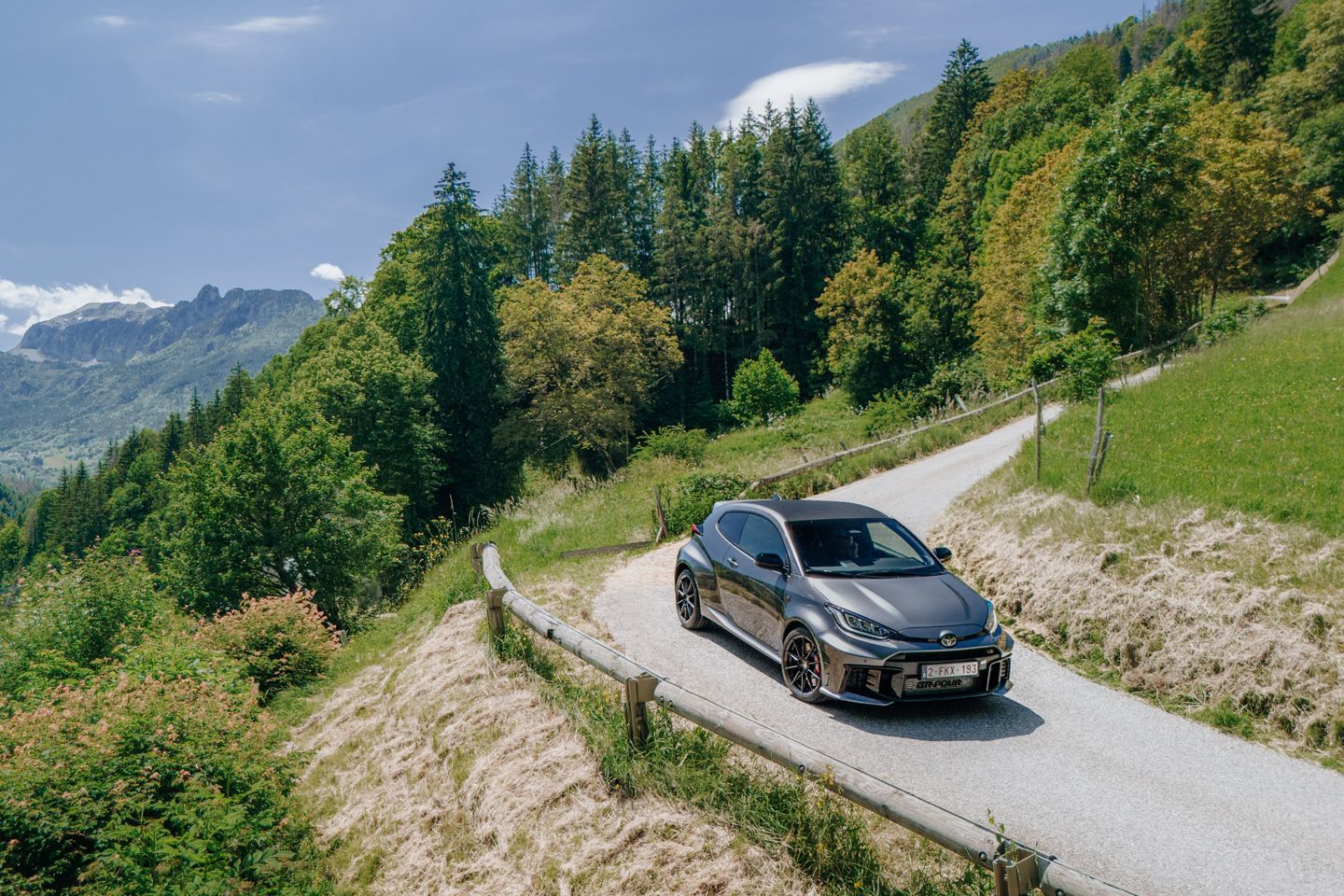
It makes for an able and exciting track car, then, especially now that it’s a bit firmer and steers with more conviction. But where the previous GR Yaris truly shone was on a tight, greasy B road. Fortunately, there’s a glorious col that formed part of the Monte Carlo Rally in the '80s and early '90s, with its cracked and heavily cambered bends serving as the perfect Welsh mountain road substitute - only with far more spectacular views and no errant sheep to look out for.
Interestingly, the new version has a slightly different character to its predecessor out here. Flicking through the col’s countless hairpins would be effortless with the old car’s lighter steering, and while the new model is keener on turn-in with less input needed, the heavier rack does give you more of a workout in the slower corners. And it’s all the more gratifying for it, making you feel like double WRC champ Kalle Rovanpera wrestling a Rally1 car along the cliff-lined roads of Rally Monte.
Moreover, it took the best part of 20 minutes before I realised that the GR Yaris I’d been assigned for the road section was in Eco mode. Driving modes weren’t available in the old car, but you can now sharpen the throttle response by switching the toggle to Normal or Sport. In the latter, as you might expect, the GR feels a smidgen sharper under acceleration than it did previously, but the additional 20hp from all the engine upgrades means it’s more eager to keep pulling higher up the rev range. For what it’s worth, there’s some fun to be had by leaving it Eco mode. The lazier throttle coupled with turbo lag does a fine impression of an old Group B rally car (at least, in my mind it does), where the pace comes from keeping the momentum up from one corner to the next.


Predictably, it's still a complete riot on a tight and narrow road. If there’s one criticism, however, it’s to be found in the firmer suspension. What was so refreshing about the old car was the feeling that it was always on its toes, floating over crests and breathing with the topography of the road. The new model feels like a more conventional hot hatch: improved lateral composure, yet it doesn’t soak up the surface in the same way as its predecessor managed. Ride comfort takes a minor but notable hit as a result.
What of the auto, then? Toyota hinted back 2020 that a flappy paddle option wasn’t off the table, taking the form of an eight-speed torque converter here. Naturally, it comes into its own on a circuit, with the track-friendly setup working well with the auto’s snappy paddle-activated shifts. However, it’s not quite as seamless on the road. At times it can take too long from pulling a paddle to the cog coming into play, and when cruising on a motorway it often refused to engage eighth, instead preferring seventh and the extra 2,000rpm that came with it - and that was in Eco mode.
Regardless, this is a sharper and better-focused GR Yaris. Admittedly, a part of me misses the slightly more pliant, rally-esque ride, and its absence may become increasingly significant when we drive it on home soil - but, for now, there’s no denying the firmer setup has resulted in a more rewarding car on the right road. This makes it a step up from the 2020 model, although it doesn't make the £44k asking price any easier to swallow. Not that Toyota will have any trouble filling the order books, partly because it’s only bringing ‘a couple of thousand’ to Europe. That ought to generate the usual stampede (and some simmering resentment) but it's probably worth bearing in mind that the original is very nearly as good as its replacement, and potentially a bit easier to live with. And definitely you'll find them cheaper in the classifieds.
SPECIFICATION | 2024 TOYOTA GR YARIS
Engine: 1,618cc three-cylinder, turbocharged
Transmission: six-speed manual, all-wheel drive (optional eight-speed automatic)
Power (hp): 280@6,500rpm
Torque (lb ft): 288@3,250rpm - 4,000rpm
0-62mph: 5.2 seconds
Top speed: 143mph
Weight: 1,280kg
MPG: 34
CO2: 187.9g/km
Price: £44,250
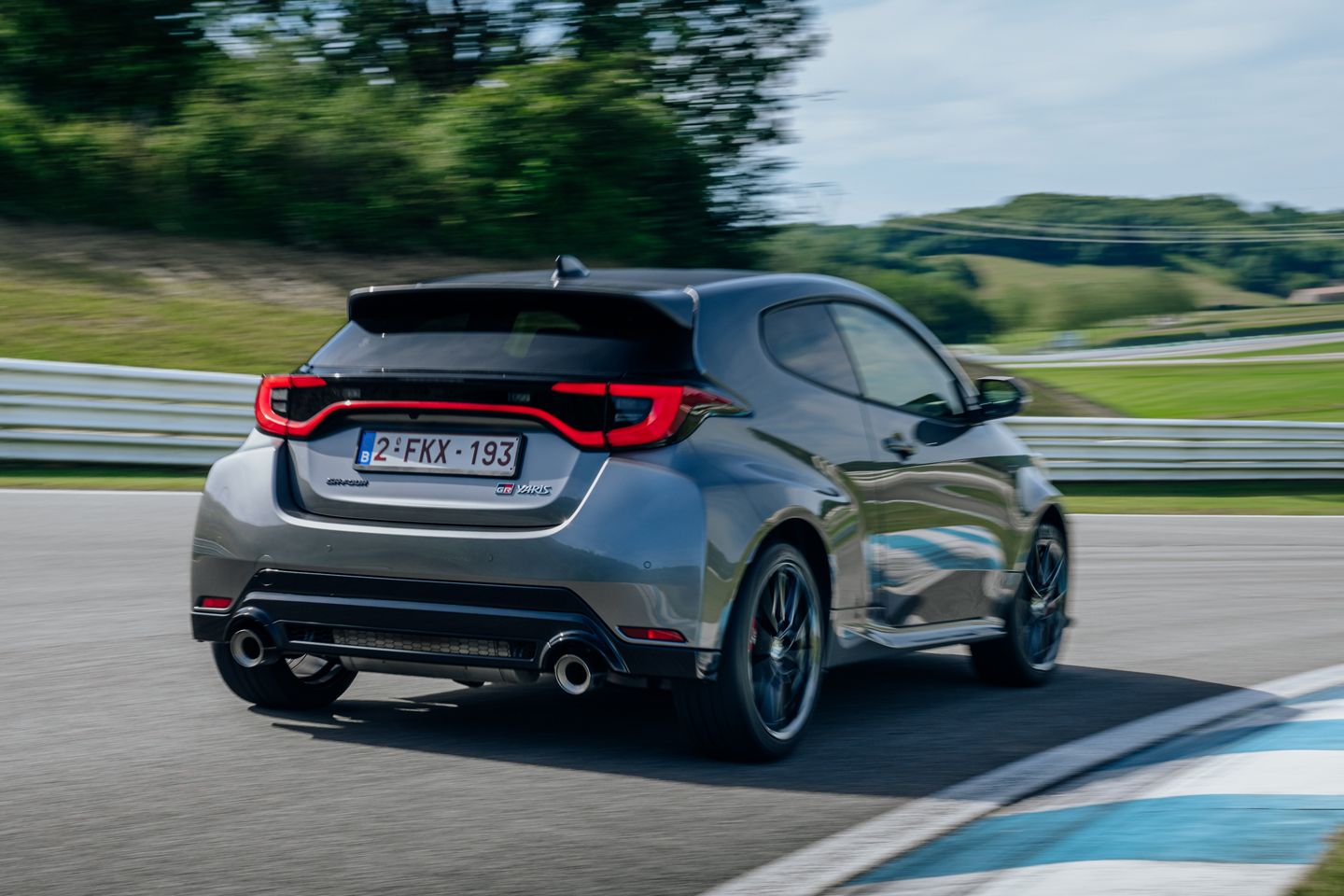
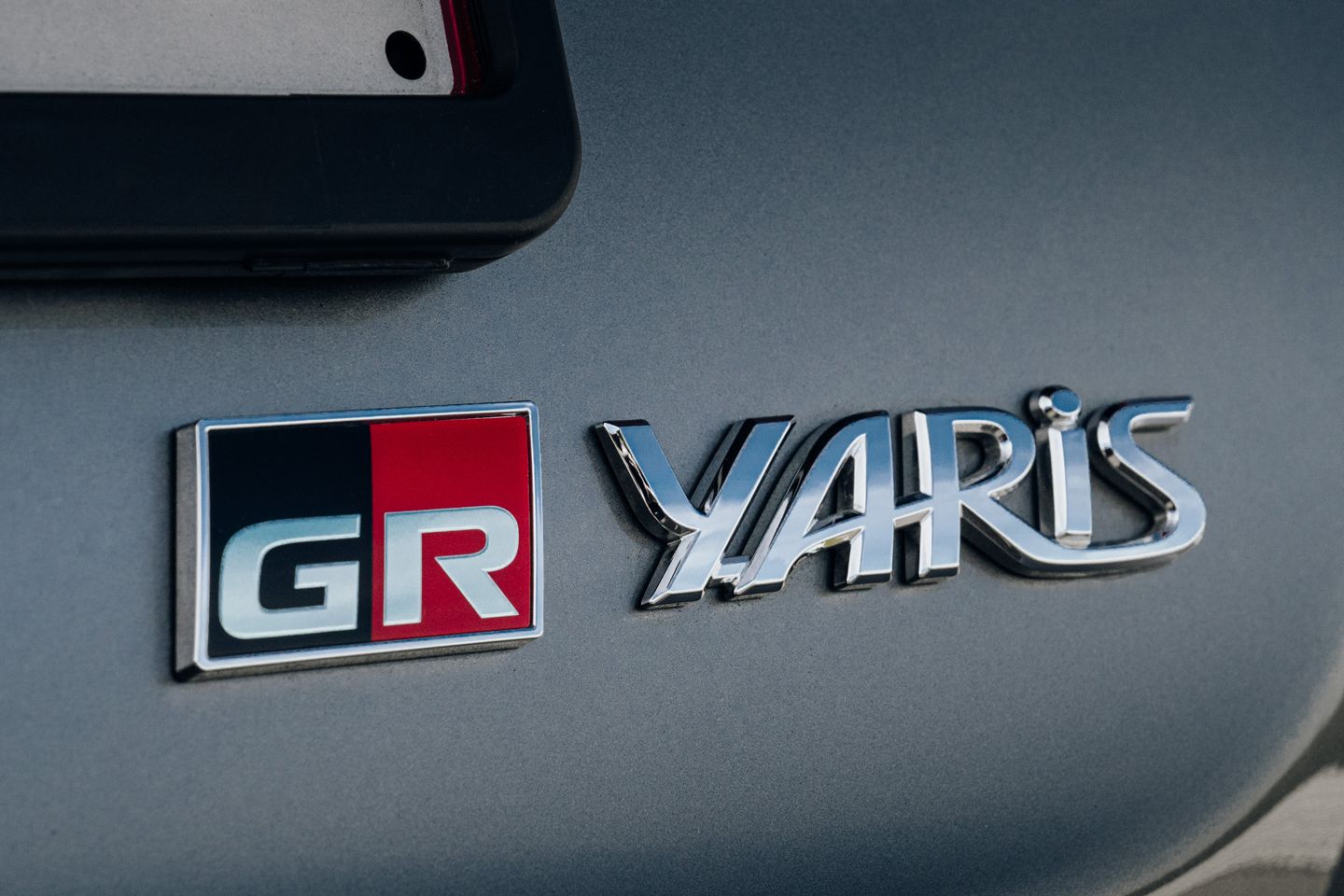



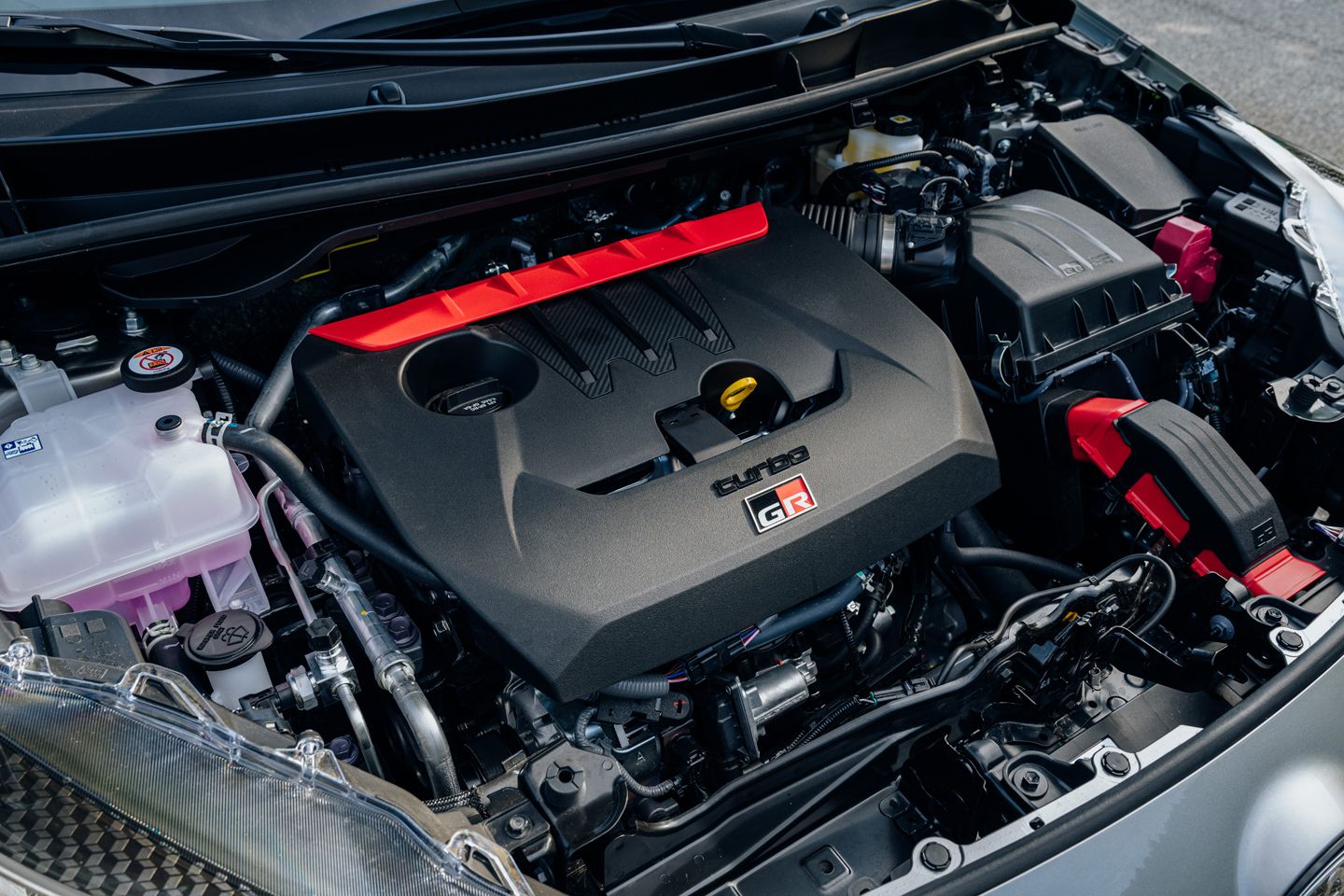
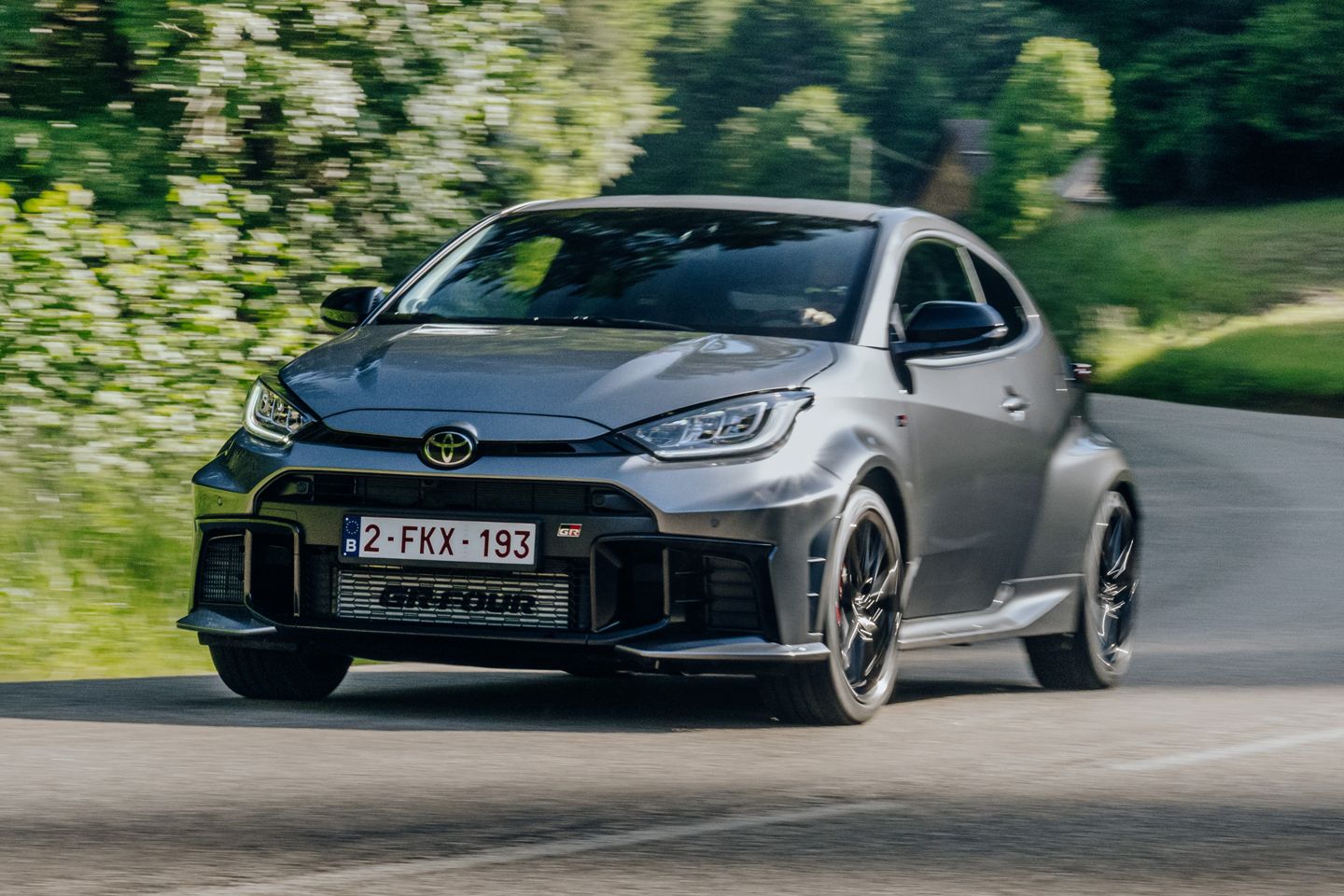
I quite like the simplistic functionality of the dash but it definitely looks 'Atari' retro as opposed to anything contempory, let alone futuristic. Again there is no mention of how this compares from a user perspective to the previous model? I appreciate that this car is predominantly about the sensations brought from the way it goes but a little more detail of how the package now works as a cohesive whole wouldn't go amiss, especially if it were aspects other than the overall driving exoerience which subjected the product to any form of criticism the first time around?
(Admittedly from a low base)
Feels like it should be a “special track addition “ of the existing car sold in parallel with the older price point + inflation, you can’t knock Toyota for continuing to push out exciting products.
The dash still looks awful to my eyes. 90’s Alba hifi style.
I quite like the simplistic functionality of the dash but it definitely looks 'Atari' retro as opposed to anything contempory, let alone futuristic. Again there is no mention of how this compares from a user perspective to the previous model? I appreciate that this car is predominantly about the sensations brought from the way it goes but a little more detail of how the package now works as a cohesive whole wouldn't go amiss, especially if it were aspects other than the overall driving exoerience which subjected the product to any form of criticism the first time around?
I quite like the simplistic functionality of the dash but it definitely looks 'Atari' retro as opposed to anything contempory, let alone futuristic. Again there is no mention of how this compares from a user perspective to the previous model? I appreciate that this car is predominantly about the sensations brought from the way it goes but a little more detail of how the package now works as a cohesive whole wouldn't go amiss, especially if it were aspects other than the overall driving exoerience which subjected the product to any form of criticism the first time around?
Gassing Station | General Gassing | Top of Page | What's New | My Stuff




